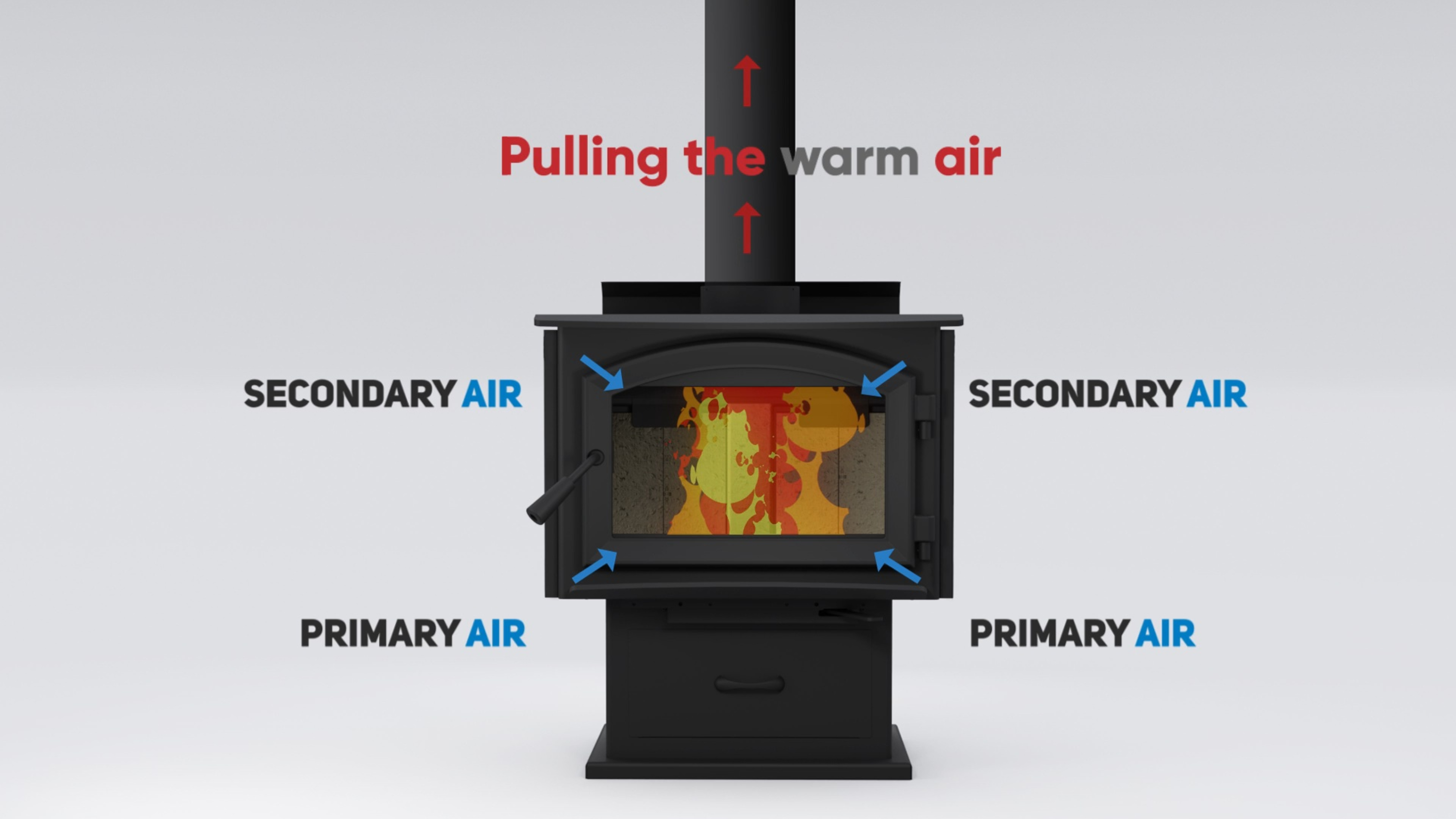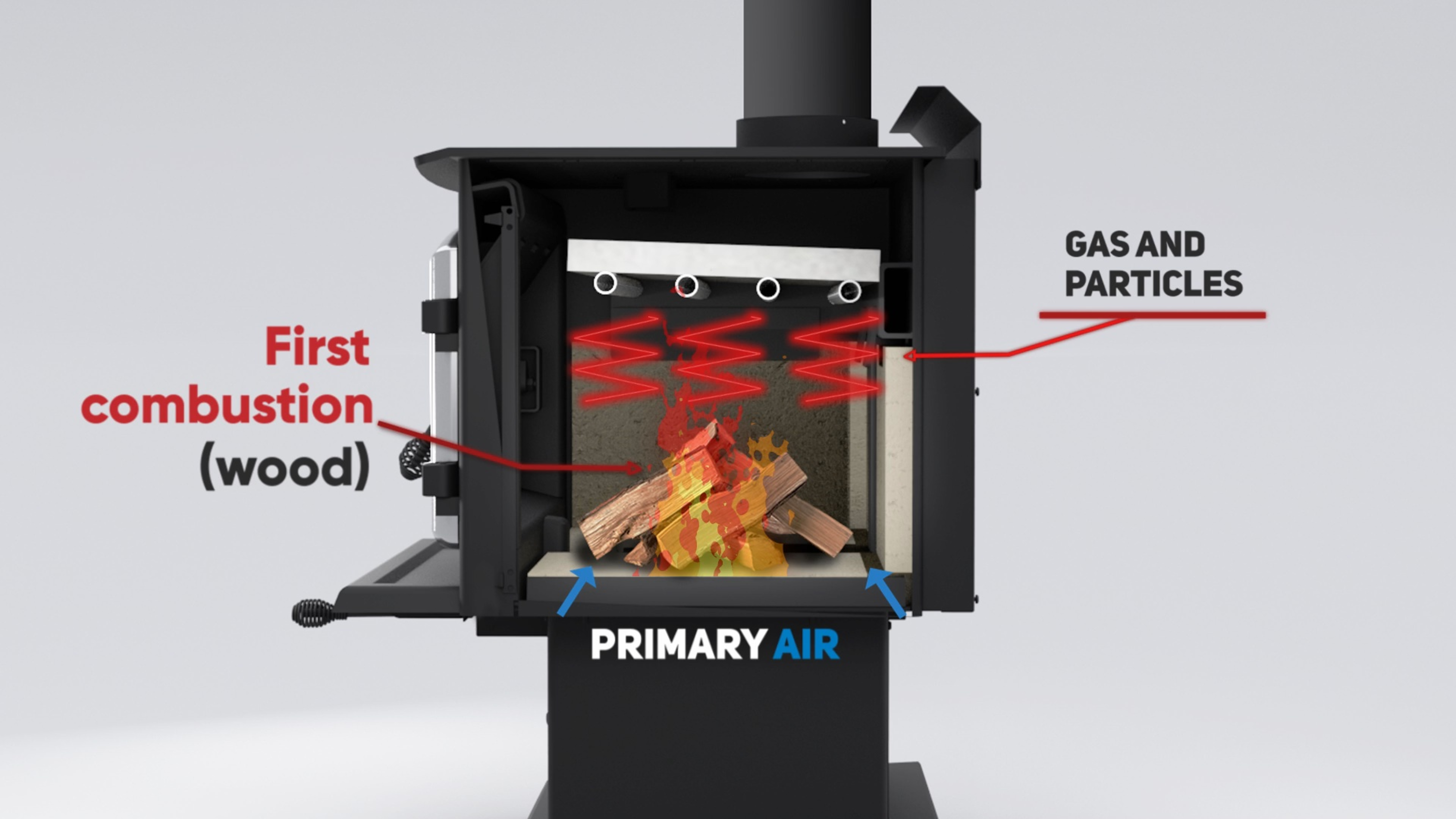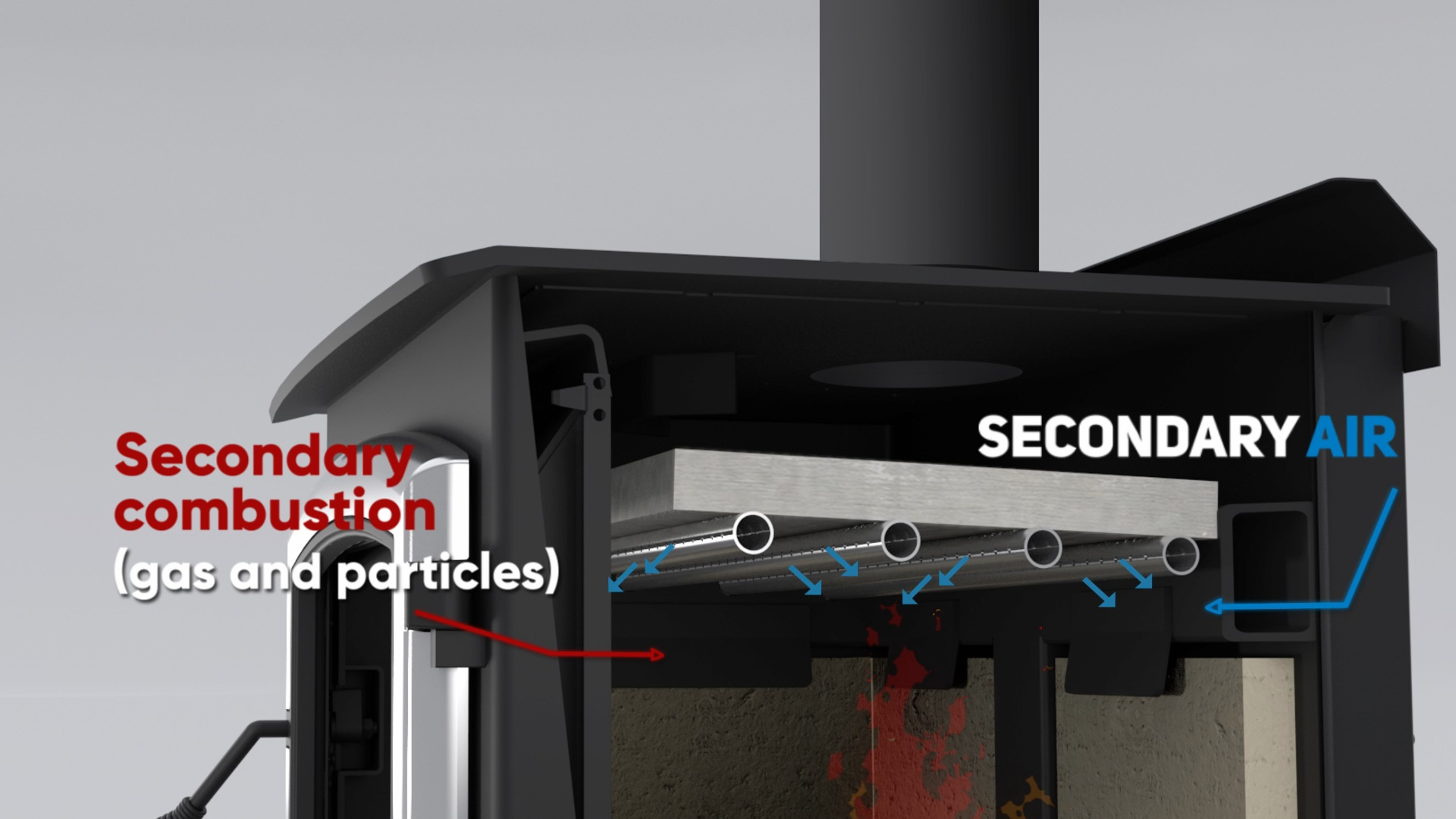How does the double combustion of an EPA appliance work?
First, the chimney acts like a straw in a cup, that is, it draws air from the combustion chamber. It’s the pull generated by the chimney that allows the intake of fresh air through the openings in the unit. The primary supply of air flows in front of the glass from top to bottom, then injects oxygen onto the embers and wood. This causes the fuel to burn, which releases gases and fine particles.


Secondary air tubes, located under the baffle, introduce oxygen into the hot gases released by the first phase of combustion. When temperature is hot enough, this causes a second combustion above the wood that burns almost all the fine particles and gases before they are evacuated through the chimney.

The air intake control allows you to adjust the intensity of the fire in your unit. The more the control is opened, the greater the amount of oxygen injected into the unit. This will cause the wood stove to burn faster and emit intense heat. Conversely, the more the control is closed, the slower the combustion. Non-catalytic stoves’ double combustion promotes a cleaner and more efficient combustion, as well as increased burn times.
To better understand, watch this video which demonstrates exactly how the double combustion works: